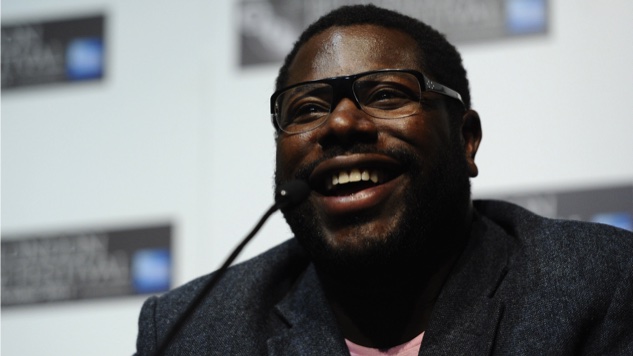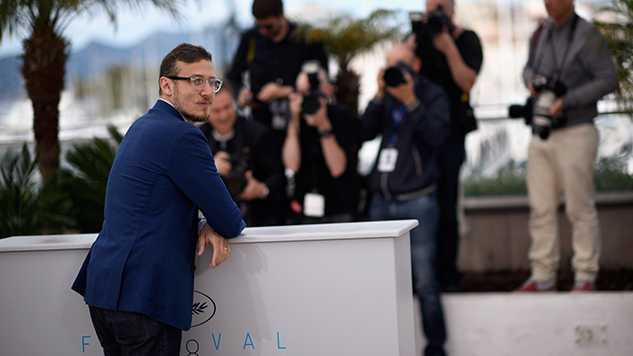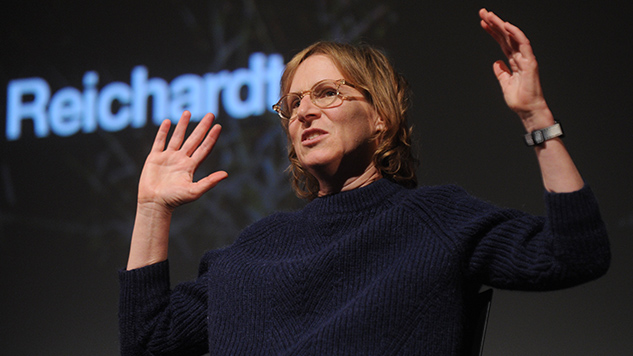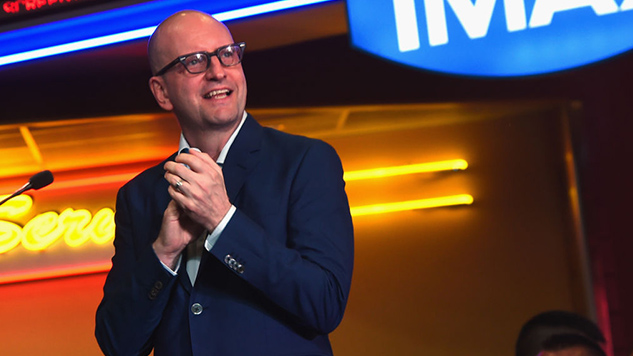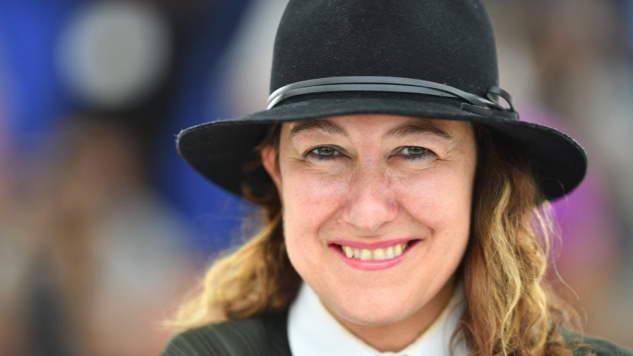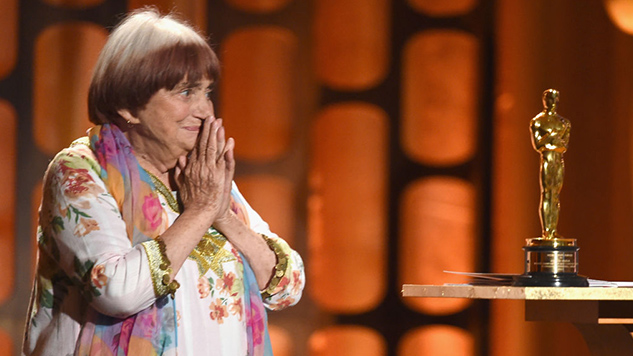20 of the Most Innovative Filmmakers Working Today
Photo of Ana Lily Amirpour: Vittorio Zunino Celotto/Getty Images
Innovation is a moving target—what was once groundbreaking is now standard, once novel now expected. This is far from insightful stuff, we know, especially when it comes to filmmaking: Look to luminaries like Steven Spielberg and George Lucas and try to imagine when there was no such thing as a blockbuster, when Star Wars and Jaws shook Hollywood apart at its foundations. Look further back than that, to the French New Wave, to blissfully tasteless and nonsensical independent films made on micro-budgets away from studio lots, flaunting their artificiality and taunting all manner and means of filmmaking precedent. Look laterally elsewhere, to Stan Brakhage exploring what a film even was in the late ’50s, what it meant to have an “untutored eye,” filming his wife giving birth or conjuring erotic rhythms from the repeated images of him, his wife and their cat splashed with red, shadows pumping across silk curtains. What was once mind-blowing today feels kinda quaint.
And yet, we still find ways to surprise ourselves. Christopher Nolan modernizes mostly abandoned film technology; James Cameron creates his own technology, redefining the studio system to cater to his blown out indulgences; Werner Herzog balks at both. Filmmaking is now, like most artistic expression, wide open to pretty much anyone with an inclination towards the medium—which means too that our idea of whatever innovation is has to stay as flexible as the processes by which we imprint images onto our audiences brains.
Distribution methods, formalist experimentation, experimental forms, animation, special effects, practical effects, thematic complexity, complex narratives, ways of seeing the human body, ways the human body sees, depictions of gender and sexuality, documentaries that aren’t, dramas that are documentaries, or just a sense of playfulness and imagination like no others: Whatever paradigm it’s shifting, an innovation is uniquely unlike anything you’ve ever seen before.
With that all in mind, here are our picks for 20 of the most innovative filmmakers working today:
1. Ana Lily Amirpour
Watching Ana Lily Amirpour’s films, one can’t help but feel in danger. It’s there in the title of her feature debut: A Girl Walks Home Alone at Night, about a vampire picking off the people of a small desert town, shot in smoky black and white and aching with the kind of young lust bound to destroy those who wield it. Her follow-up, wreathed in post-apocalyptic cannibal couture, is The Bad Batch, allowing big names like Jim Carrey and Keanu Reeves and Jason Momoa to indulge their worst weird-ass tendencies. It’s a grimy nugget of a flick, writhing in Amirpour’s many-genre’d whims, predictably greeting mixed critical reactions. Which should be expected for a filmmaker who takes such risks, who seems uncompromising in her vision, never once throwing the audience a lifeline or guaranteeing a lick of safety. Disaster, in an Amirpour film, is imminent.
2. Theo Anthony
Documentary director Theo Anthony draws parallels—between statistics and hunches, between logistics and subtext, between the systemic and the everyday, between the drama of history and the total lack of histrionics required to tell that history, any history—but never seems compelled to lay out more than the facts, trusting his audience to sense in the quotidian and all of its many coincidences the terrible institutions and forces of power behind the societies we’ve set up to conquer all that coincidence. His first full-length documentary, this year’s Rat Film, is a sign of the kind of simple power he possesses in his filmmaking, able to present all-consuming theses without disappearing down a rabbit—er, rat—hole.
3. Olivier Assayas
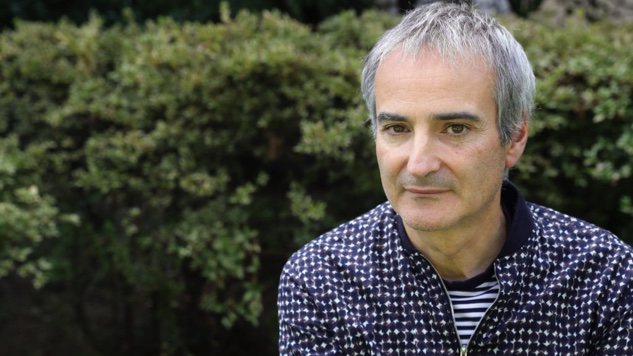
2014’s Clouds of Sils Maria, French writer and director Olivier Assayas’s lyrical catch-all for the many half-notions that accompany getting older—especially if you’re a celebrity—breathes with the bitter sweetness of life. Decay, loss of memory, insecurity, arrogance: Assayas boils these monolithic themes down to a sentiment, that no matter what we accomplish, we will always miss out on something equally worth accomplishing: some other part to play, some other life to live. In Personal Shopper a year or so later, Assayas brought Kristen Stewart back to twist, grieve and occasionally shout through an odd array of genres, from ghost story to thriller to quiet melodrama, rarely offering a distinction between any of them, rarely even offering to explain the many questions he raises. In resisting the urge to pin his films to one mode, one genre, or one reality, seamlessly meandering between boundaries, lingering in the interstitial, Assayas never demonstrates that he’s incapable of controlling his stories, but in fact implies the opposite: No rules will prevent him from telling exactly the story he must. (Photo: Vittorio Zunino Celotto/Getty Images)
4. The Daniels
Known for the “Turn Down for What” music video, and for the short film (“Interesting Ball”) in which one director is sucked up into the butt of the other director (among other anomalies, such as a group of frat brothers forming a murderous Voltron-like multi-human and a man cuckolded by a dodge ball), and now for the farting boner-corpse movie, Daniel Kwan and Daniel Scheinert are filmmakers in complete mastery of the absurdity at the heart of everything they do. Swiss Army Man, their feature length debut about a man (Paul Dano) who, while stranded on a deserted island, discovers a dead body (Daniel Radcliffe) with extraordinary physical abilities (involving farts and boners), is both a testament to their childish imaginations and a relentlessly creative exploration of mental illness, nostalgia and the ways in which movies define (usually to our detriment) our expectations for love and happiness. Almost nothing makes clear sense in the work of the Daniels, but rarely does nonsense feel so clear, the directors’ strange and vile and hilarious ideas pushed to natural ends, drawing logic like ethereal cobwebs from the minds of every viewer to assemble somehow a magnificent tessellation of pop culture and poop joke as emotionally wrenching as it is ridiculous.
5. Jonathan Glazer
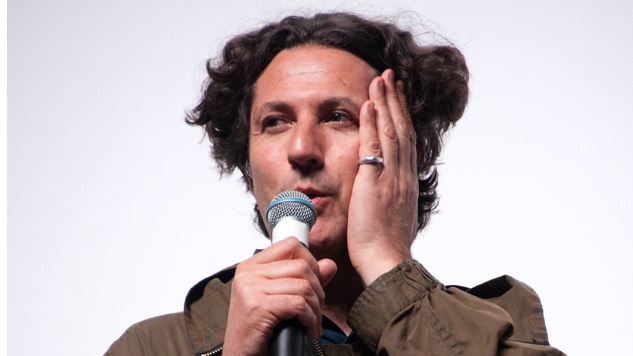
While Sexy Beast and Birth proved Jonathan Glazer a formidable deconstructionist and deft with seemingly impossible tones, his Under the Skin in 2014 is an incredible achievement in sci-fi filmmaking, pulling at the threads of reality television, of anxiety towards the Other, of Scarlett Johansson’s gorgeous celebrity Other-ness, of even the panic, the potential for sickness and death, that pervades modern notions of sexual liberation. Adopting Michel Faber’s novel about an alien who works for an interstellar meat processing corporation, but stripping the story to its bones, Glazer worked with Johansson to essentially re-enact the novel IRL, putting her in a wig and mounting a few cameras inside her car so that she could pick up unsuspecting blokes without tipping them off that they were cinematic prey. It’s a simple but astounding feat, so perfectly attuned to the themes that seem to flow subconsciously from not only Johansson, but from those of us who look at her—her audience, in thrall to her beauty or her success or whatever ineffable notion that makes her bankable—and see someone not quite one of us. (Photo: Angela Weiss/Getty Images)
6. Kitty Green

Australian documentarian Kitty Green spent 14 months living with the women of FEMEN—the topless Ukrainian movement attempting to take down the corrupt patriarchy plunging the country into poverty—to make Ukraine Is Not a Brothel, her first film. Through the friendships she developed, archival footage, interviews and fly-on-the-wall voyeurism, Green portrays the movement as an inherent contradiction: Intimate in conception, but broad in execution, an idealistic shroud hiding much darker means. The film isn’t so much a belabored historical document as it is a litigation of truth—as, at their cores, most documentaries are—peeling away the FEMEN’s overarching layers of rhyme and reason to determine what drives these women, their honesty accessible only because of Green’s dogged involvement. That same dedication to context Green sublimated throughout her short film follow-up, The Face of Ukraine: Casting Oksana Baiul, in which the director held fake auditions for young Ukrainian girls to play their gymnast idol in order to explore what a female role model means in such a country. She went even further with that short’s spiritual progeny, 2017’s Casting JonBenet (currently on Netflix). This time bringing her fake auditions to Boulder, Colorado (JonBenet Ramsay’s hometown) to find a cast for a movie (that will never exist) about the JonBenet case, Green inevitably transforms her time with these would-be actors by collecting their impressions of the case and what really happened. Inevitably, these residents bring their own stories into their explanations, revealing whole worlds of pain and curiosity able to orbit JonBenet’s story, elucidating much about themselves by peering into the darkness of the Ramseys’ tragedy. It’s graceful filmmaking, always aware of the inherent lies in trying to make an honest film, and there’s no doubt that Green will continue to bend the documentary form, breaking through to deeper and deeper truths. (Photo: Lisa Maree Williams/Getty Images for AFI)
7. Alain Guiraudie
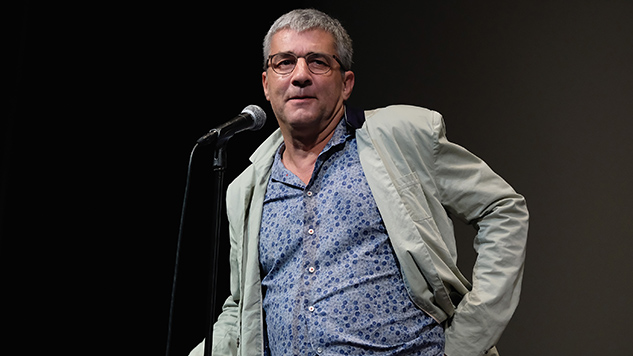
For almost 30 years, French director Alain Guiraudie—who’s called post-structuralist George Bataille a big influence—has chipped away at gender and sexual binaries, at the elitist hierarchies of taste and decorum, to delve into what forces conspire to make us human. He can also photograph the fuck out of some pastoral scenery. His latest film, Staying Vertical mounts a mélange of arresting images: full-screen close-ups of female genitalia filmed with almost clinical curiosity, shown in various stages of hairiness to denote the passage of time; full-screen close-ups of a live birth; full-screen close-ups of a man’s genitalia stroked; full-screen close-ups of a pair of male genitalia, mutually fondled—each image a shocking and then fascinating vista of flesh, furrowed symmetrically against Guiraudie’s gorgeous exterior shots. When the film’s main character (Damien Bonnard) presents a comically monolithic boner to literally hump an old man (Christian Bouillette) to death, Guiraudie frames this assisted suicide “climax” in the same way he frames all anatomical showcases or carnal acts in all of his films: gently and concisely, as if gender fluidity is a given and omnivorous sexual hunger a human gift. Not that the graphic nature of his work is anything worth celebrating for its own sake, but Guiraudie is one of few contemporary filmmakers whose sagging, flappy sensuality is absolutely fundamental, hilarious and hypertrophic all at once. (Photo: Theo Wargo/Getty Images)
8. Lucile Hadzihalilovic

Though she’s only made two feature-length films in as many decades—editing, too, husband Gaspar Noe’s I Stand Alone and co-writing Enter the Void—these worlds Lucile Hadzihalilovic has created with the anxiety of inhabiting such weak corporeal frames burdened by such befuddling rules, hierarchies and parts. In Innocence she haunts the halls of a girls’ boarding school, revealing but never quite explaining what it is the girls are supposed to be doing there, or whether they have any choice in the matter. In Evolution, she lopes through the Mediterranean streets and sallow surgical rooms of an otherworldly island where not-quite-human, eyebrowless “mothers” feed their prepubescent “sons” an inky liquid, preparing them for some sort of sideshow pregnancy and eventual harvest. These realities, slightly out of tune with our own, still feel familiar, like vestiges of mostly forgotten histories. Hadzihalilovic’s brilliance as a director lies within that familiarity, wherein she taps the fears of the subconscious without offering cause and effect: These are our stupid, weird bodies; who really knows how they work? (Photo: Carlos Alvarez/Getty Images)
9. Don Hertzfeldt
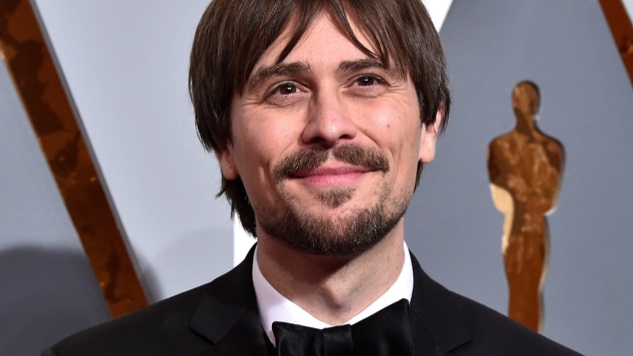
In World of Tomorrow (now, with this year’s release of part two, the first in what one can only hope is a magnificently expanding universe)—in 16 minutes—Oscar-nominated animator Don Hertzfeldt lays out humanity’s destiny: a vastly interconnected age of barely functional connections. In stick figures, impressionistic smatterings of vibrant color, geometric arrays, a snippet of a Strauss opera and the perspective of one little girl, Emily (Winona Mae), World of Tomorrow makes all science fiction to come before feel limited, not far-reaching enough—not enough. In any of the subjects that keep us up at night, that define us through our calamities—mental degradation, the loss of memory, nostalgia, cloning, AI, robotics, time travel, immortality, death, the incomparable loneliness of the universe—in Hertzfeldt’s deceptively simple animation, all is boiled down to an essence, a “yes” or “no” question: Why does simply being human push us farther and farther away from each other? Further and further away from ourselves? Where 2012 feature-length film It’s Such a Beautiful Day (written, animated and directed by Hertzfeldt) depicts the unknown but scary-real mental illness of another stick figure named Bob, World of Tomorrow projects that illness outward, into the future, and then constricts again, irrevocably attaching you to this little girl, Emily. And again, an expansion: You can’t bear the thought of leaving her, this little stick person cartoon, to face the universe alone. Hertzfeldt spreads out, then pulls back, out and then back, again and again, his every animated cell an unmistakable sign of life: a heartbeat. (Photo: Kevork Djansezian/Getty Images)
10. Sergei Loznitsa
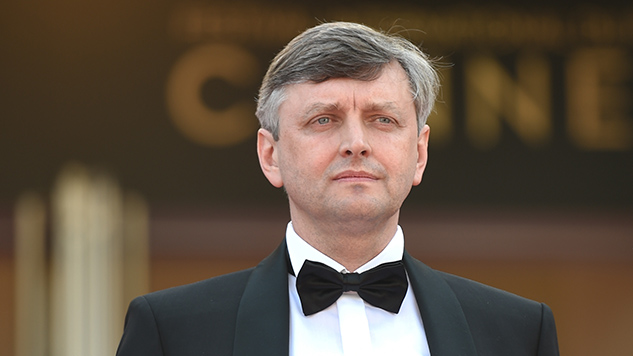
A Ukranian director who’s spent a good share of his career at Cannes re-imagining what kinds of films will be his calling card, Sergei Loznitsa makes ponderous art pieces that quietly comprehend what fellow documentary director Ai Weiwei might describe as the “human flow.” Austerlitz, Loznitsa’s most recent documentary, lines up long, motionless shots in black and white of tourists crowding into the grounds of former Nazi concentration camps. It’s arresting despite what it actually contains: low-contrast, dadcore panoramas of Millennials taking smoke breaks or flirting with their tour guides while behind them nuclear triads of Middle American white families listen to anecdotes about assassinating Hitler and wear Jurassic Park promo gear, all of this in the bleached white sun on the grounds of a compound that not too long ago housed incomprehensible horror. Loznitsa and DP Jesse Mazuch use unbroken takes of tour groups and families wandering around half-dehydrated, positioning the camera eye-level to drag the viewer through cycles of engagement—first curiosity, then boredom, then attention due to discovering a vast array of cultural signifiers and unintentionally offensive t-shirts and inane conversations, then curiosity and boredom again—finding countless ways to lull us into accepting what shouldn’t have ever been accepted. The same went for 2014’s Maidan, which took a similar tact in detailing the Ukrainian civilian uprising that brought down Victor Yanukovich’s presidency. These unflinching documents of the everyday Loznitsa juxtaposes with his more dramatic fictional work, such as last year’s A Gentle Creature, the story of one woman facing off against Russia’s incomprehensible prison system. Plenty of filmmakers navigate the banality of evil, searching for shades of grey, but only Loznitsa seems to want to capture the world’s boring badness in all of its boundless scope. (Photo: Antony Jones/Getty Images)
11. David Lynch
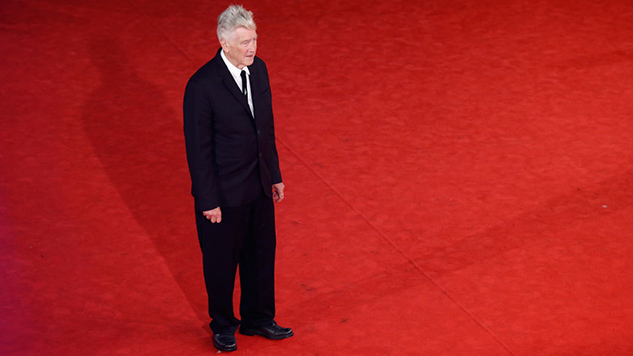
To deduce the influence of David Lynch is tantamount to picking apart the meaning of a dream: You will almost always be wrong, and even attempting to do so spoils the power of what you’ve witnessed. Everyone knows that Lynch refuses to explain his films—he often comes out and says as much, a man who talks plainly, with a limited vocabulary accompanied by hyper-detailed facts (much like a dream)—but that rarely stops us, even at the expense of the primordial feelings we’re mining, diluting them by bringing them from our subconscious to light. We keep trying, recognizing in Eraserhead the existential anxiety of being a parent, the ways in which responsibility by its very nature encourages us to resent what we’re responsible for. We intuit in Wild at Heart the toxicity of passion, sense in Blue Velvet the cretins of domesticity we’ve allowed to crawl under our noses unchallenged, watch in Twin Peaks as Lynch devastates genre, polluting prime time TV with the unspeakable—though, in turn, we still struggle to find words. We did so again this year with Twin Peaks: The Return, which is more than a new season of the show, it’s an 18-episode litigation of what “returning” even means, whether it’s remotely possible, or simply a futile gesture towards a feeling long gone. No director can capture the horror of that loss like David Lynch—and there’s no better filmmaker to push us screaming into a future we are not prepared to comprehend. (Photo: Ernesto S. Ruscio/Getty Images)
